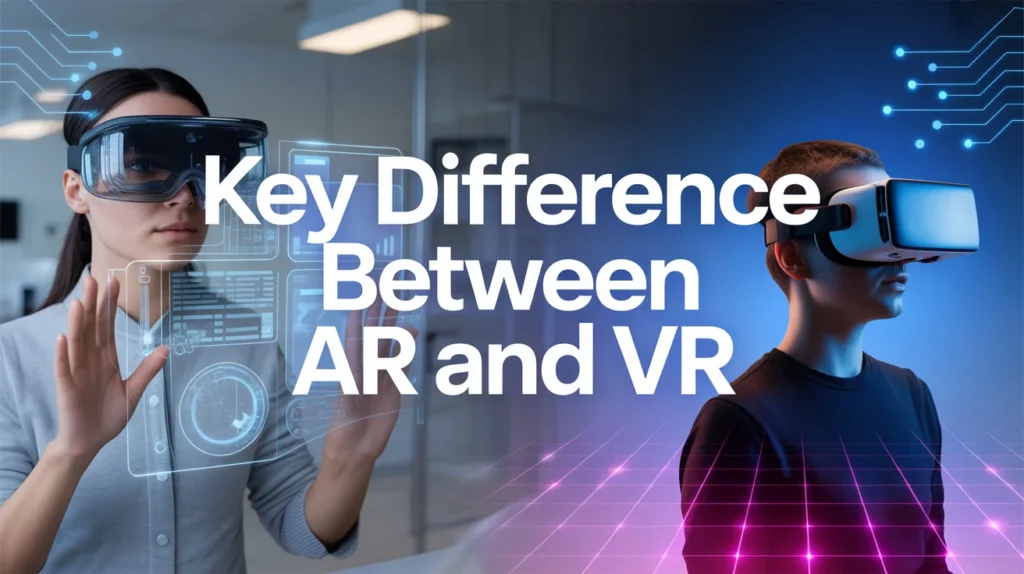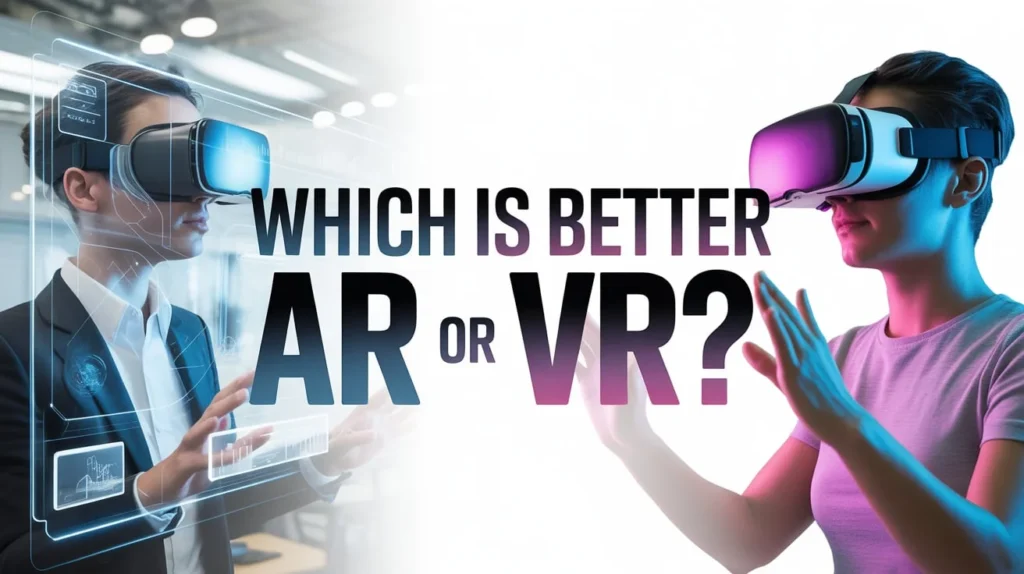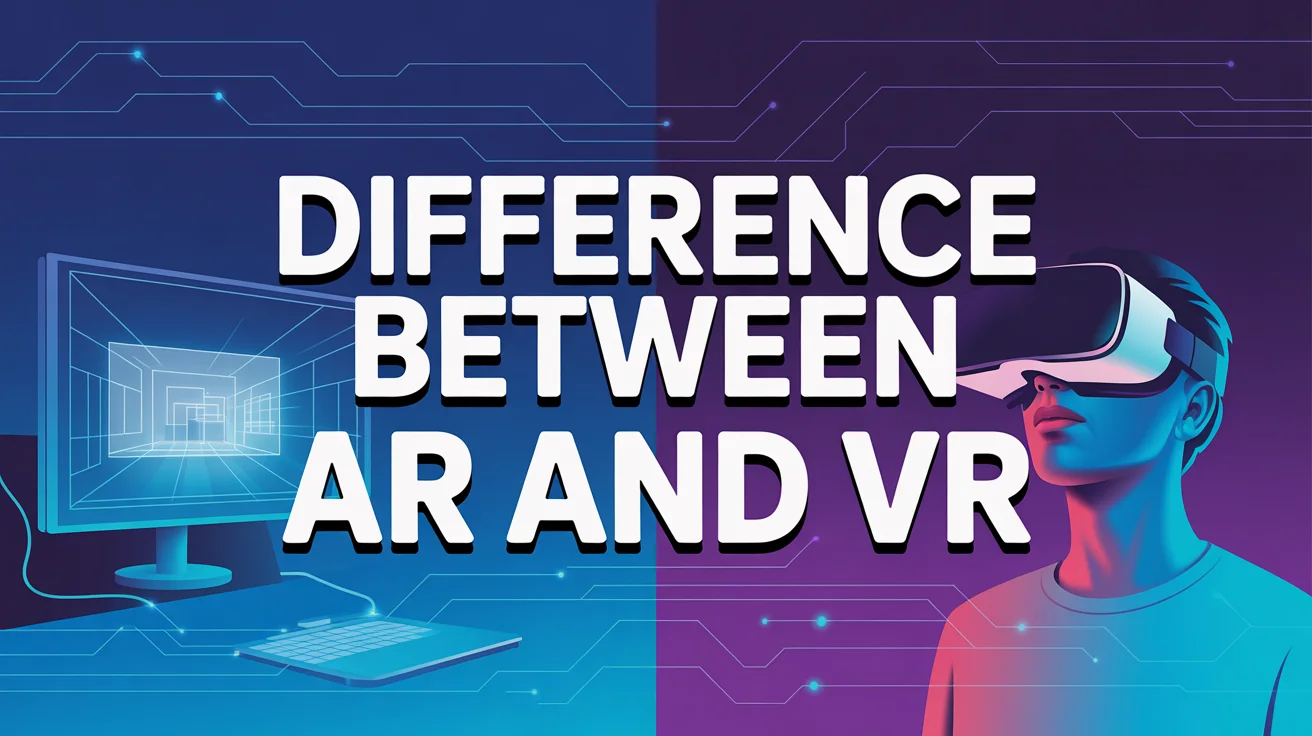The difference between AR and VR is one of the hottest debates in today’s tech-driven world. Both Augmented Reality (AR) and Virtual Reality (VR) are revolutionizing industries from gaming and education to healthcare and retail. While they might sound similar, the way they immerse users is completely different.
AR overlays digital content onto the real world, enhancing your surroundings, while VR creates an entirely simulated environment that replaces reality. Understanding the distinction between AR and VR is crucial because it helps businesses, creators, and everyday users know which technology fits their goals best.
What is Augmented Reality (AR)?
Augmented Reality (AR) blends the real world with digital enhancements. Using your phone, tablet, or AR glasses, AR overlays images, sounds, or other data onto your surroundings. Think of Pokémon Go, where characters appear in your living room, or IKEA’s AR app, which lets you place furniture in your house before buying.
- Key features of AR:
- Enhances reality instead of replacing it
- Accessible through smartphones, tablets, and AR glasses
- Used in gaming, retail, navigation, and education
In short, AR gives you a richer experience by adding layers of information to the world you already see.
What is Virtual Reality (VR)?
Virtual Reality (VR) is a fully immersive experience that replaces the real world with a digital one. Using VR headsets like Oculus Quest or PlayStation VR, you can step inside a virtual world that feels real. Unlike AR, VR doesn’t let you see your actual surroundings—it transports you to a computer-generated environment.
- Key features of VR:
- Creates a fully immersive experience
- Requires headsets and sometimes controllers
- Used in gaming, simulations, training, and therapy
With VR, you’re not enhancing your living room—you’re leaving it behind and entering a whole new world.
Key Difference Between AR and VR

The main difference between AR and VR lies in the level of immersion. AR adds digital elements to your real environment, while VR creates a completely virtual one.
Here’s a simple comparison:
FeatureAugmented Reality (AR)Virtual Reality (VR)EnvironmentAdds digital objects to real surroundingsCreates an entirely virtual environmentImmersionPartial – you still see the real worldFull – reality is completely replacedDevice NeededSmartphone, tablet, AR glassesVR headset and controllersApplicationsRetail, healthcare, gaming, educationGaming, training, therapy, entertainmentAccessibilityEasy and more affordableExpensive and requires specialized gear
This table makes it clear—AR is about enhancement while VR is about replacement.
Applications of AR and VR in Real Life
AR Applications
- Retail: Try on clothes virtually or place furniture in your room before buying.
- Education: Bring textbooks to life with interactive 3D visuals.
- Healthcare: Surgeons use AR for better visualization during operations.
- Navigation: AR overlays directions onto real roads for easier travel.
VR Applications
- Gaming: Step into the battlefield or explore fantasy worlds.
- Training: Pilots, soldiers, and doctors use VR simulations for practice.
- Therapy: VR helps treat phobias, PTSD, and anxiety.
- Entertainment: VR concerts, museums, and movies offer unforgettable experiences.
Which is Better AR or VR?

There’s no one-size-fits-all answer. AR is better for enhancing everyday tasks, making it practical for shopping, navigation, and work. VR is better for immersive experiences, perfect for gaming, learning, or therapy. Businesses often combine both technologies (known as MR – Mixed Reality) to create even more engaging solutions.
Future of AR and VR
The future is exciting. Tech giants like Apple, Meta, and Google are investing billions into AR and VR. AR glasses could soon replace smartphones, while VR could redefine remote work, social interaction, and entertainment. Together, these technologies will reshape how we learn, play, and connect.
FAQs
1. What is the difference between AR and VR in simple words? AR adds digital objects to your real world, while VR replaces your world with a digital one.
2. Which is more expensive, AR or VR? VR is generally more expensive since it requires headsets and controllers, while AR works on smartphones and is more affordable.
3. Is AR safer than VR? Yes, AR is safer since you can still see your surroundings, while VR blocks the real world completely.
4. Can AR and VR work together? Yes, they can combine into Mixed Reality (MR), blending features of both for advanced experiences.
5. What industries benefit most from AR and VR? Retail, healthcare, education, gaming, and training industries are leading adopters of AR and VR.
Conclusion
The difference between AR and VR is simple yet powerful. AR keeps you in the real world while enhancing it with digital layers, whereas VR transports you into a fully immersive virtual environment.
Both technologies are game changers, but their applications depend on the goal. As AR and VR continue to evolve, they’ll not only transform how we play and shop but also how we learn, heal, and connect with one another.


